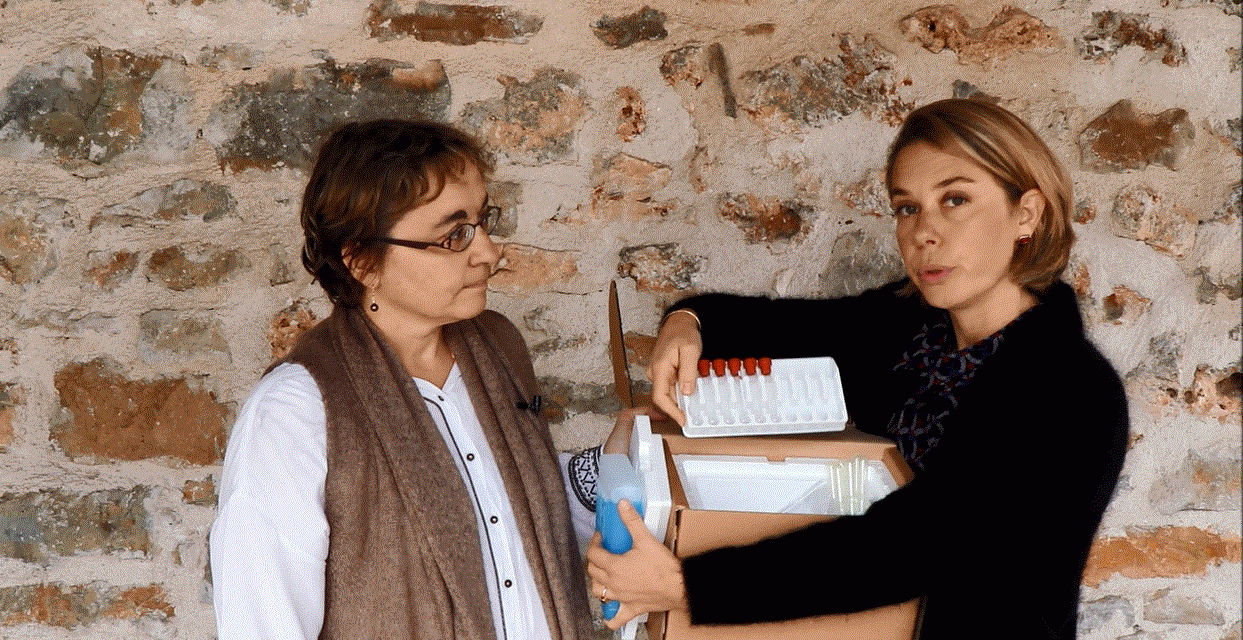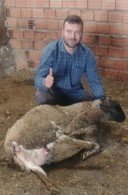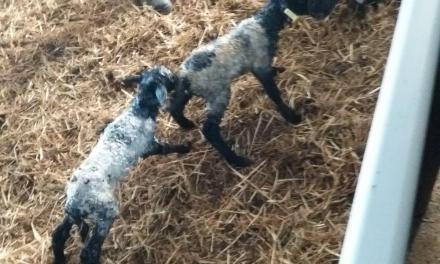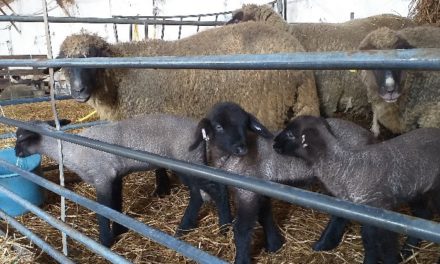This post is also available in:
![]()
OSCAR aims to improve elucidation rates, have more targeted health management measures, enhance epidemiological surveillance tool (farm, local and national levels)
For more information : http://www.observatoire-oscar.fr/
Standardized differential diagnosis of abortions: a global approach to diagnosis of abortive infectious diseases
Country: France
Dairy or/and meat sheep: Dairy and meat sheep
Source of information: http://www.observatoire-oscar.fr/
Level of solution:
|
|
Knowledge |
X |
Practical |
|
|
Just Being Tested |
Aim: improved elucidation rates, more targeted health management measures, enhanced epidemiological surveillance tool (farm, local and national levels)
Description:
- What is implemented: definition of a standardized differential diagnosis of abortions (priority diseases, analyses conducted, elected matrix, targeted females, interpretation keys) and in the field, promotion of a diagnostic kits to facilitate early diagnosis of the etiology of abortive series
- How is implemented: providing sampling kits i.e. ready to use standardized boxes with specification sheets, all necessary materials, refrigeration unit…
available to veterinarians and, where appropriate, material left to the breeders (swabs in particular) - When is it implemented: in case of series of abortions (in France: at least three abortions over seven days or less)
Expected benefits: improved elucidation rates, control of costs (analysis and health management measures more specific), comparability of results
Prerequisites and/or limits (knowledge, training, capabilities, cost, management, facilities, equipment, etc.)
- multi-stakeholder consultation on methodological orientations (including the choices to harmonize and optimize the procedures at all stages, from the herd to the laboratory) and rules of interpretation
- development of a collective organization: laboratories, veterinarians, breeders
- dissemination and training (all actors in the field)
- joint procurements to reduce the costs
References:
Nothing in English but numerous factsheet and decision trees available on the Idele website : http://idele.fr/no_cache/recherche/publication/idelesolr/recommends/communiquer-sur-le-diagnostic-differentiel-des-avortements-et-sur-oscar.html
|
1. Level End-User Assessment (Partner) |
||
|
Country |
France |
|
|
Partner |
Idele |
|
|
Topic |
GESTATION |
|
|
Issue |
Abortion : control and prevention |
|
|
Solution No/Name |
standardized differential diagnosis of abortions: a global approach to diagnosis of abortive infectious diseases |
|
|
Service provider/technicians+vet or farmers |
||
|
Benefit |
||
|
Benefit expected |
Increase productivity |
|
|
System |
||
|
Is the solution suitable for various production systems |
Y |
|
|
If no – for which system |
|
|
|
Cost |
||
|
What are the asset costs |
>10000 |
|
|
What are the maintenance costs |
>1000 |
|
|
Any limits to its applicability |
no |
|
|
Work Load |
||
|
|
Farmers |
Service provider/tech.-vet-others |
|
How much time is required to prepare and implement the solution |
<1 day |
>=1week |
|
How many people is needed to implement the solution? |
|
Depending on the organization in the country |
|
Timing |
||
|
How long it takes to get results? |
Immediate for the farmer (= implementation of appropriated measures) |
|
|
How long it takes to see an effect on sheep productivity? |
Several months for the farmer (effects probably observed for the next lambing season) once the diagnostic kit is distributed but upstream several months of preparation and consultation work |
|
|
Equipment/Facility |
||
|
|
Farmers |
Service provider/technicians-vet-others |
|
What kind of equipment/tool are necessary? |
Possibility of storage (material and/or samples) |
After the kit conception and diffusion: possibility of storage (material and/or samples) |
|
Skill/Knowledge-Training (farmer) |
||
|
Does the solution need any specific skill/knowledge or training? |
General knowledge on abortive diseases and specific knowledge to realize the samplings (if there is no or little technical help by vets or technicians) |
|
|
How much time will be required for training |
0,5 to 1 day for general knowledge |
|
|
Wider Environment |
||
|
Is there any particular regulation link to the solution? |
http://www.observatoire-oscar.fr/ |
|
|
Does the solution need any particular structure or organisation? |
development of a collective organization: laboratories, veterinarians, breeders |
|
|
Other Comments |
||
| none | ||
|
|
|
|
Level End-User Assessment
|
Country |
FRANCE from Ireland |
|
|
Solution No/Name |
17 abortion control and prevention |
|
|
Farmer/Service provider/technicians-vet-others |
Vet + Journalist |
Seamus Fagan + Darren Arty |
|
Why did you select this solution? |
Knowledge and interest. Opportunity to test the solution on a few cases of abortion on the farm. |
|
|
Was it easy to implement? |
more or less |
|
|
If not say what are the identified drawbacks? |
The most time a farmer is likely to use it I would imagine is in the face of few cases of abortion. The screens at the start talk about vaccination but I would think if the screens were flipped and the screens giving the explanation were brought to the starts it would work better. The advice on this page is a good snapshot and very useful tips that are easy to read. To find available laboratory for analyses |
|
|
Did you need to adapt it? |
Yes and No (depending on the context) |
|
|
If yes, how? |
If the solution is going to be called “Abortion control and Prevention” then the control part of the solution needs to be brought up front. There is no final page screen to say that you are finished. That would be useful along with maybe a few numbers such as where samples can be sent or the details of the facilities offering the service. Could also have a page of how samples should be handled and submitted. Possibly could also work better by having the info on vaccination listed directly after each cause. |
|
|
Were you happy with the outcome of the solution? |
 |
|
|
What were the outcomes? |
The kit was a guide step by step to identify the disease and to give a treatment route |
|
|
Score the solution |
Interesting, good aid for the farmer but improvable by inserting small tweaks |
|
|
Will you continue to implement it? |
Yes after slight adaptations |
|
|
If not, for which reasons? |
|
|
|
Comments/Additions |
Explain more objectives at the start Some information needed (enzootic risk) Interesting to get a feedback for farmers and vets |
|







